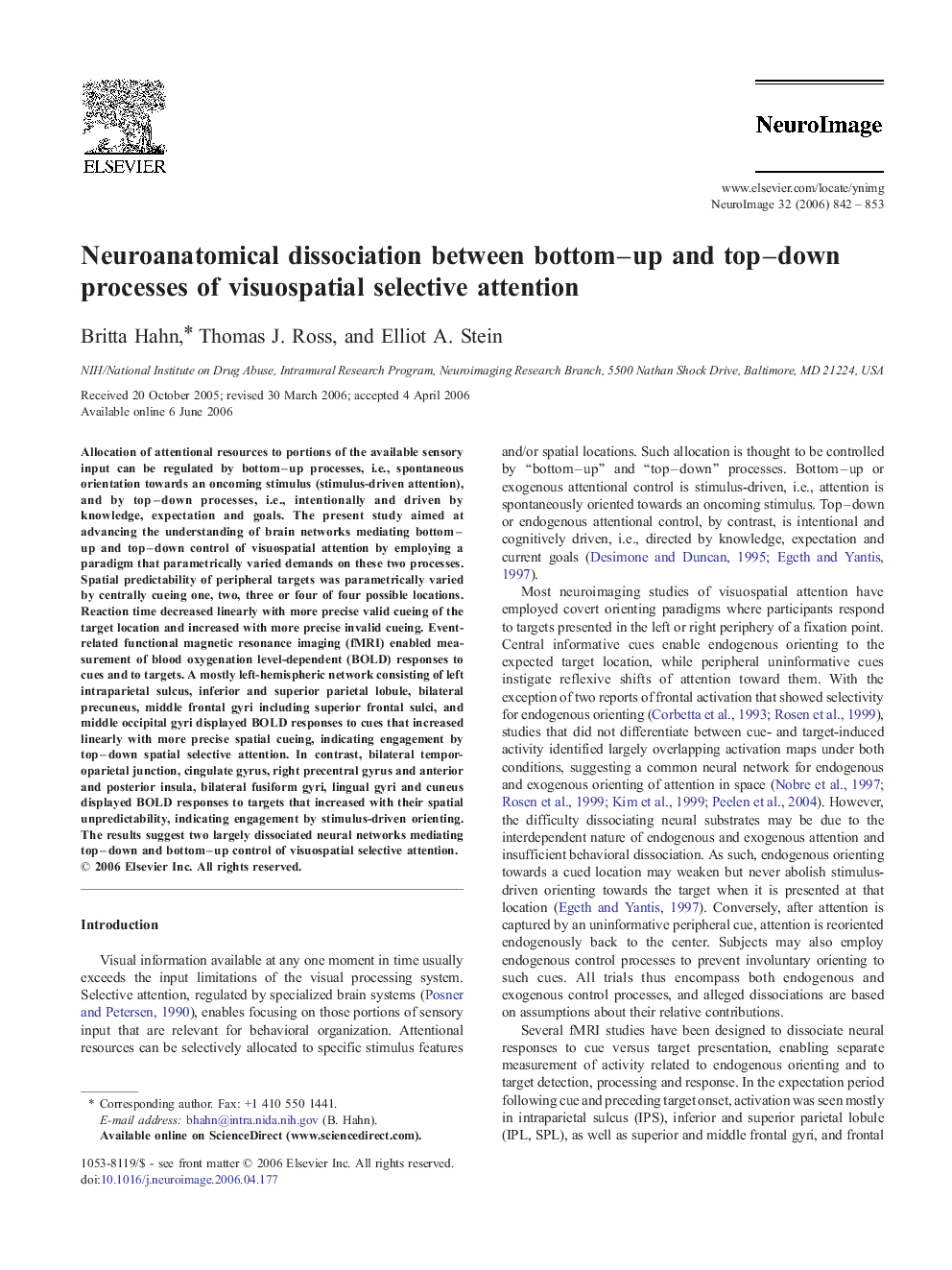| کد مقاله | کد نشریه | سال انتشار | مقاله انگلیسی | نسخه تمام متن |
|---|---|---|---|---|
| 3074277 | 1188867 | 2006 | 12 صفحه PDF | دانلود رایگان |

Allocation of attentional resources to portions of the available sensory input can be regulated by bottom–up processes, i.e., spontaneous orientation towards an oncoming stimulus (stimulus-driven attention), and by top–down processes, i.e., intentionally and driven by knowledge, expectation and goals. The present study aimed at advancing the understanding of brain networks mediating bottom–up and top–down control of visuospatial attention by employing a paradigm that parametrically varied demands on these two processes. Spatial predictability of peripheral targets was parametrically varied by centrally cueing one, two, three or four of four possible locations. Reaction time decreased linearly with more precise valid cueing of the target location and increased with more precise invalid cueing. Event-related functional magnetic resonance imaging (fMRI) enabled measurement of blood oxygenation level-dependent (BOLD) responses to cues and to targets. A mostly left-hemispheric network consisting of left intraparietal sulcus, inferior and superior parietal lobule, bilateral precuneus, middle frontal gyri including superior frontal sulci, and middle occipital gyri displayed BOLD responses to cues that increased linearly with more precise spatial cueing, indicating engagement by top–down spatial selective attention. In contrast, bilateral temporoparietal junction, cingulate gyrus, right precentral gyrus and anterior and posterior insula, bilateral fusiform gyri, lingual gyri and cuneus displayed BOLD responses to targets that increased with their spatial unpredictability, indicating engagement by stimulus-driven orienting. The results suggest two largely dissociated neural networks mediating top–down and bottom–up control of visuospatial selective attention.
Journal: NeuroImage - Volume 32, Issue 2, 15 August 2006, Pages 842–853